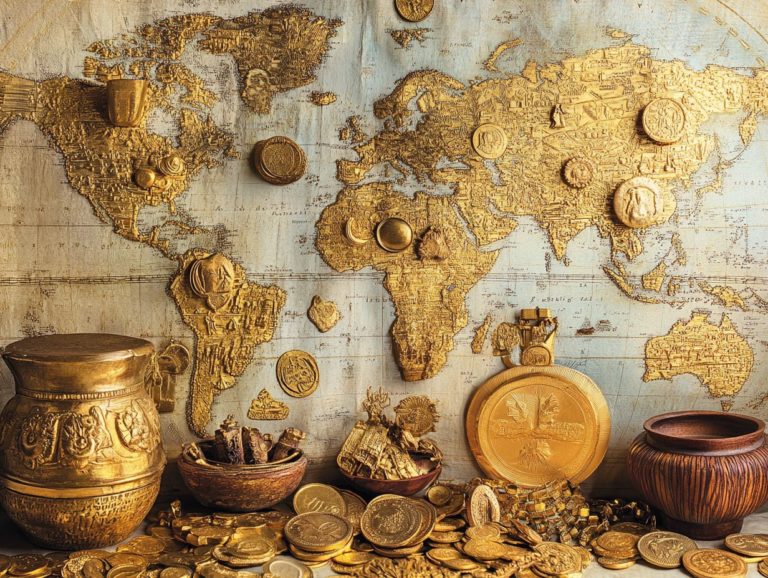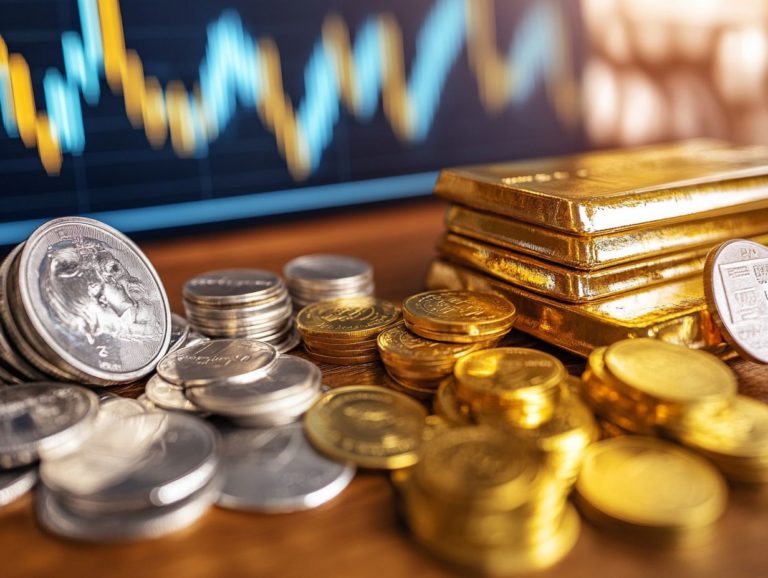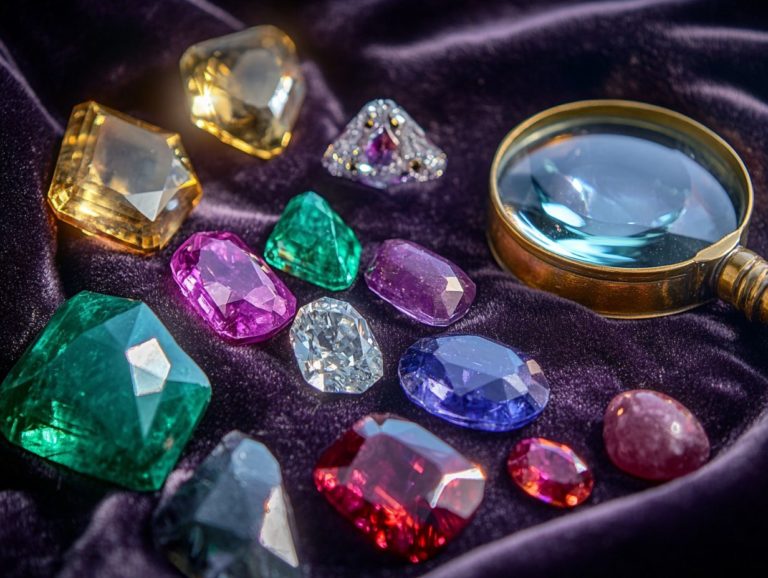5 Reasons to Consider Platinum Investments
Platinum, a rare and precious metal, has undoubtedly captured your attention as an investor or industry professional. Its unique properties and rich historical significance make it a fascinating choice.
With applications ranging from automotive catalytic converters, which help reduce harmful vehicle emissions, to exquisite high-end jewelry, platinum s value goes beyond simple aesthetics.
Here are five compelling reasons to invest in platinum:
- Its historical high value
- Diverse industrial applications
- Limited supply
- Its role as a hedge against inflation
- The potential for substantial returns
Whether you re a seasoned investor or simply curious about precious metals, discover what makes platinum a truly valuable asset in today s market.
Contents
- Key Takeaways:
- 1. Historically High Value
- 2. Diverse Industrial Uses
- 3. Limited Supply
- 4. Hedge Against Inflation
- 5. Potential for High Returns
- What Is Platinum and Why Is It Valuable?
- Frequently Asked Questions
- What are the benefits of considering platinum investments?
- What are some potential risks associated with platinum investments?
- How does the current market outlook for platinum look?
- Is there a minimum investment requirement for platinum?
- What are some ways to invest in platinum?
- How does platinum compare to other precious metals?
Key Takeaways:
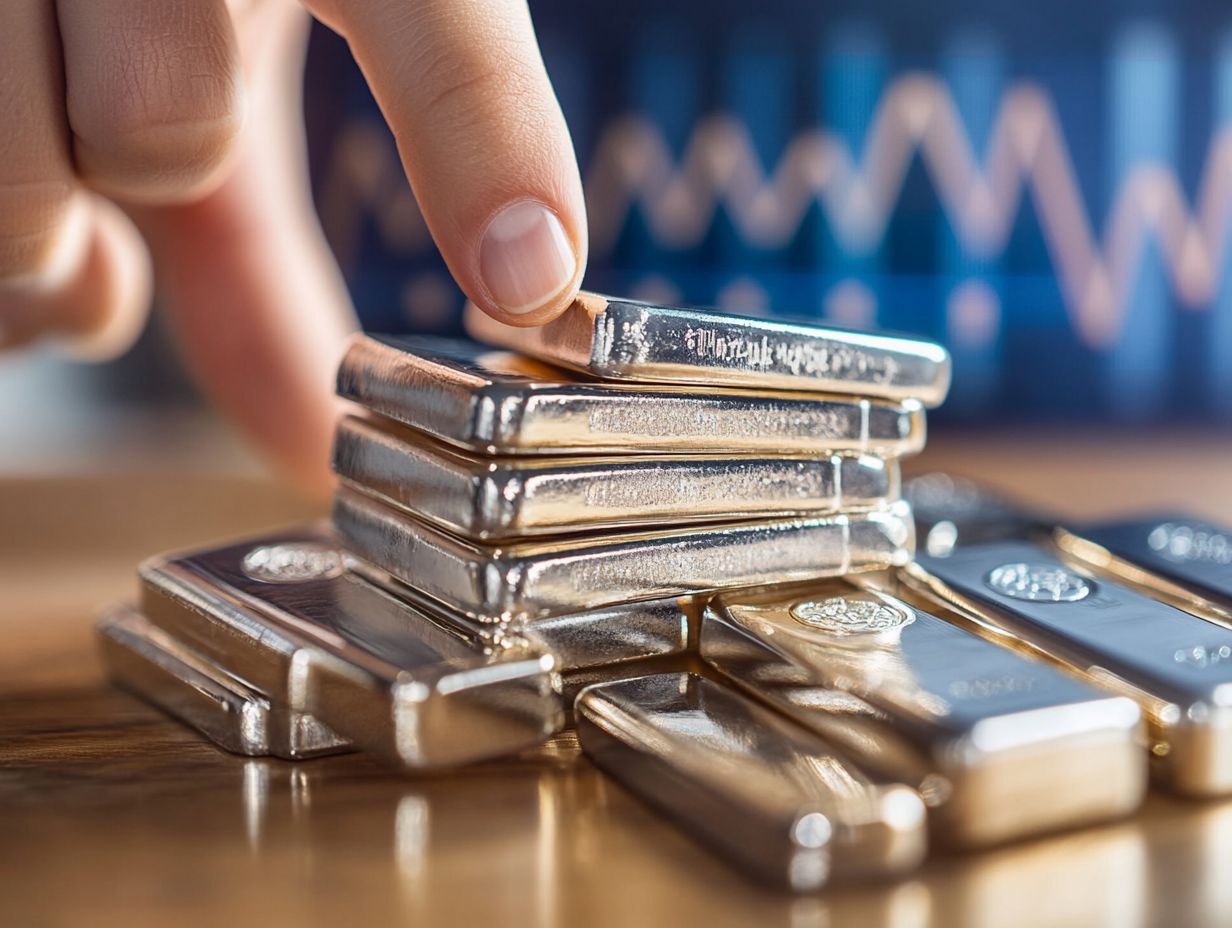
Diversify your investment portfolio with platinum, a precious metal with high historical value and limited supply.
Platinum has diverse industrial uses, making it a valuable and sought-after commodity.
As a potential hedge against inflation, platinum can protect your investments during economic uncertainties.
1. Historically High Value
Throughout history, platinum has consistently held a prestigious position among precious metals. It is often regarded as a cornerstone for investments and a reliable safeguard for smart investors looking to enhance their portfolios.
This exceptional status arises from its rarity and versatile industrial applications, which create demand that gold and silver often cannot match.
You might have seen how platinum’s value can soar, particularly during periods of market volatility. Its prices tend to show greater stability compared to silver and, at times, even gold, which can be swayed by speculative trading.
These dynamics underscore platinum’s enduring appeal as a hedge against economic uncertainty, making it an attractive choice among precious metals for those who recognize its true potential.
2. Diverse Industrial Uses
Platinum’s industrial applications span multiple sectors, including automotive, electronics, and renewable energy. It plays a pivotal role in modern technology and manufacturing.
In the automotive industry, platinum is crucial in catalytic converters, transforming harmful emissions into less toxic substances and enhancing vehicle eco-friendliness.
In electronics, platinum is essential in connectors and capacitors. It ensures optimal performance and durability in devices critical to today s technology-driven landscape.
Platinum is also biocompatible, making it invaluable in healthcare innovations. It plays a significant role in medical devices and treatments, such as targeted drug delivery and cancer therapies, ultimately improving patient outcomes.
3. Limited Supply
The limited supply of platinum, along with rising industrial demand, creates a scarcity that significantly impacts its market value and appeal as an investment option.
This scarcity arises primarily from the geographical concentration of platinum resources, predominantly in South Africa and Russia. Mining in these regions faces challenges like political instability and strict environmental regulations.
As these issues persist, overall production remains constrained, increasing competition among investors. This scarcity not only drives up prices but also enhances platinum’s desirability as a valuable asset for diversifying investment portfolios.
Consequently, its fluctuating valuation captures the attention of various sectors, making it even more attractive as risks loom.
Ready to explore platinum investments? Start today and secure your financial future!
4. Hedge Against Inflation
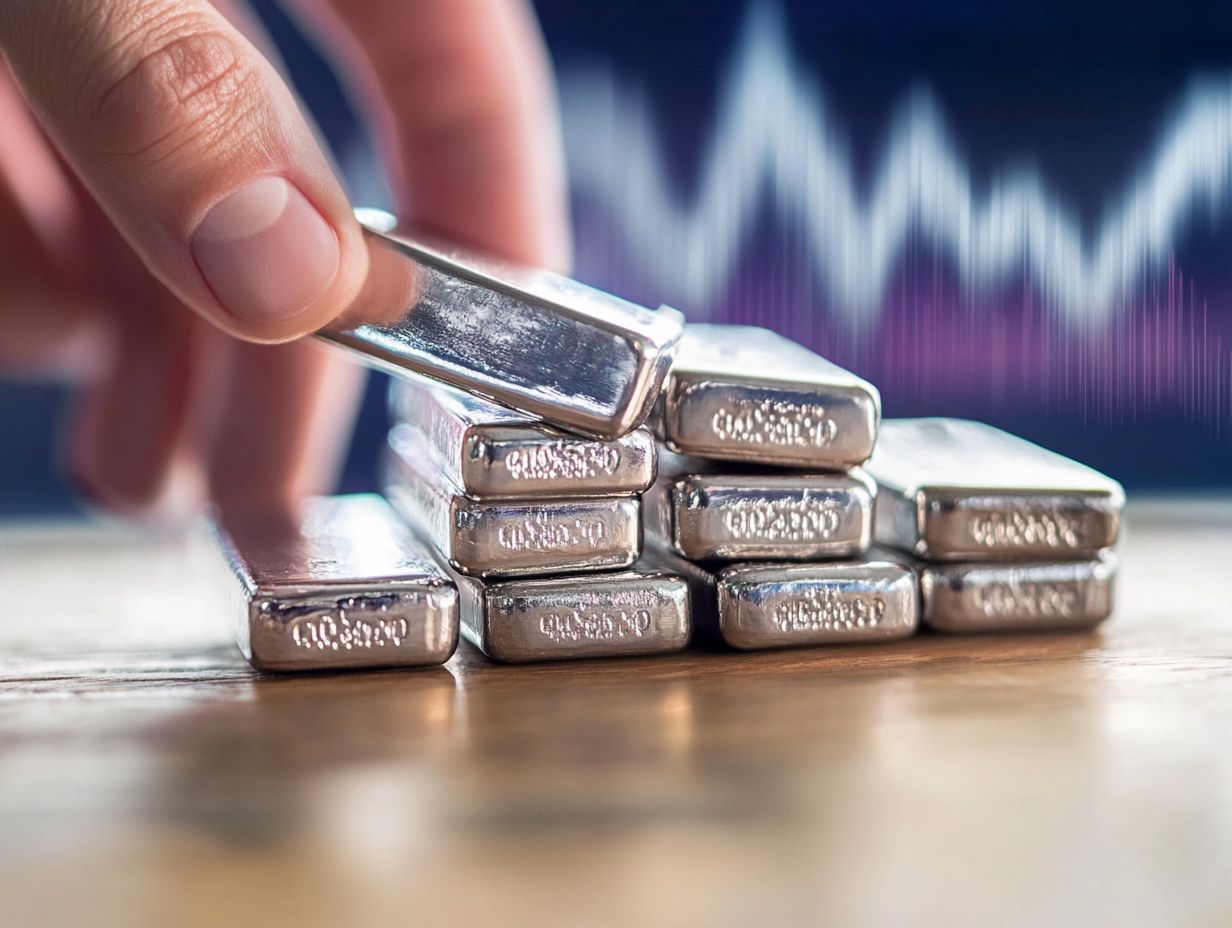
Platinum is a precious metal and a reliable hedge against inflation. It protects your wealth during economic uncertainty and market volatility.
When prices rise, platinum has shown strong resilience, often outperforming gold and silver. Its industrial applications also strengthen its demand, making it a unique investment choice that serves as a store of value and benefits from economic growth.
Unlike gold, often viewed solely as a safe haven, and silver, which reacts more to price swings, platinum s dual role enhances its appeal.
If you re looking for stability against inflation, platinum is a strong choice. It offers protection and the potential for increased value.
5. Potential for High Returns
Investing in platinum offers the potential for substantial returns through an increase in value, making it an attractive option for diversifying your investment portfolio.
Platinum has historically experienced notable price fluctuations, peaking at around $2,300 per ounce in 2008. More recent averages are between $900 and $1,200 per ounce. Analysts predict a gradual upward trend, possibly reaching $1,300 per ounce by 2025 due to growing demand from the automotive and industrial sectors.
Consider various factors that influence the market economic cycles, mining production levels, and geopolitical events all of which can impact supply and demand.
When comparing platinum to gold and silver, its unique market dynamics highlight its potential for different returns. This makes platinum an essential asset class for savvy investors like you.
What Is Platinum and Why Is It Valuable?
Platinum is a rare and precious metal known for its exceptional properties and value. Its limited supply and diverse industrial applications make it a compelling choice for anyone serious about securing their financial future.
This silver-white element, represented by the chemical symbol Pt, is highly resistant to corrosion and tarnishing, making it a favored material in automotive and jewelry manufacturing.
Many investors are drawn to platinum for its great value and practical uses, such as in catalytic converters that help reduce harmful emissions, as well as for its intrinsic value as a store of wealth, much like gold.
The rarity of platinum, often mined in smaller quantities than gold and silver, adds to its appeal, especially during economic uncertainty when tangible assets are viewed as safer. Many consider platinum a wise investment and a reliable hedge against inflation.
How Is Platinum Used in Various Industries?
Platinum showcases its versatility through extensive industrial applications, from catalytic converters in the automotive sector to crucial roles in electronics, healthcare, and renewable energy technologies.
In the automotive industry, it plays a vital role in reducing harmful emissions, helping you meet strict environmental regulations.
In electronics, platinum is essential in hard drives and various connectors, valued for its excellent conductivity and resistance to corrosion.
The healthcare sector utilizes platinum in medical instruments and cancer treatments, emphasizing its impressive biocompatibility.
Looking ahead, the rise of electric vehicles presents an exciting opportunity for platinum to enhance battery technology and fuel cells.
As the demand for sustainable energy solutions grows, the metal’s significance in industrial applications is poised to soar even higher.
What Factors Affect the Supply and Demand of Platinum?
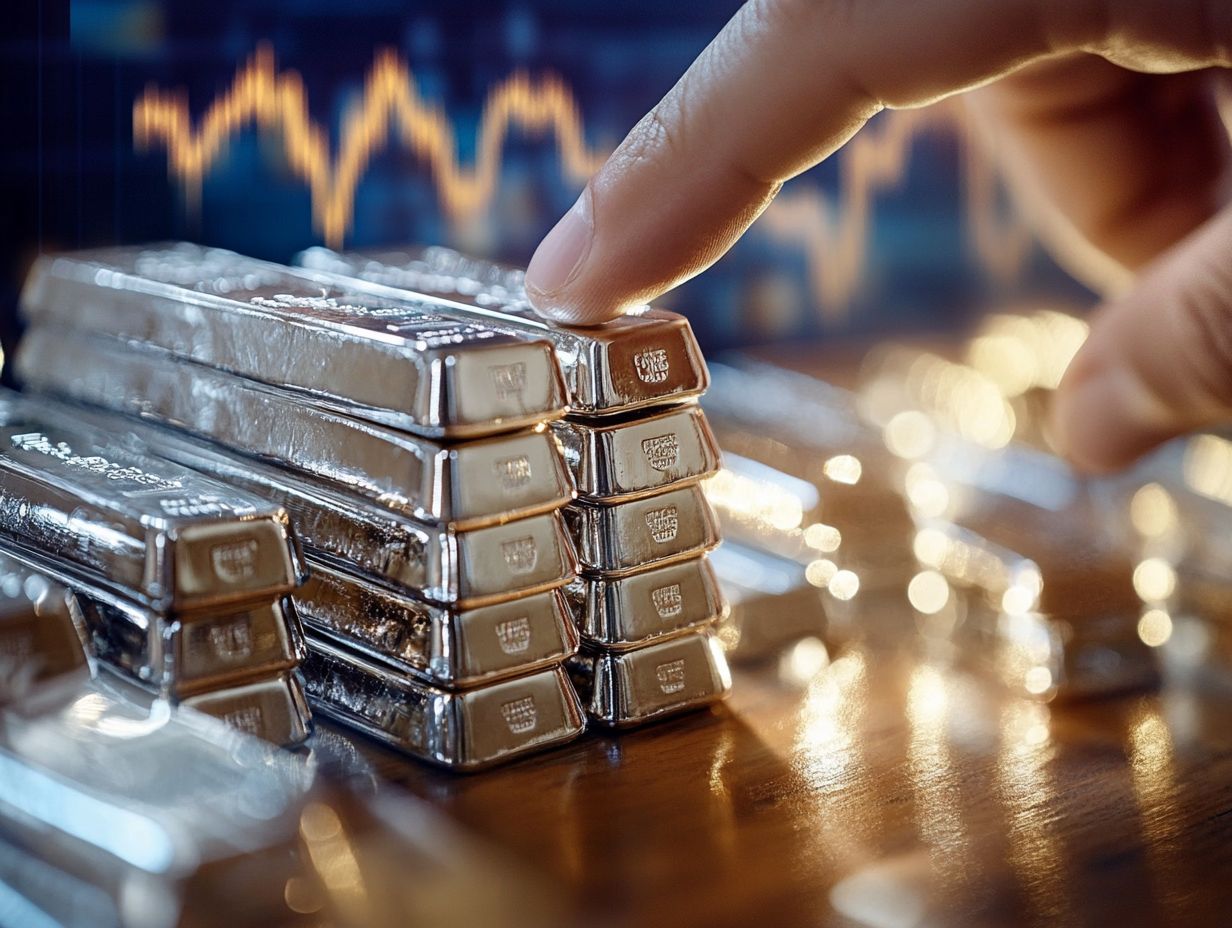
Platinum’s supply and demand are influenced by various factors. Economic conditions, industrial demand, and the metal’s limited availability all play a role in its market behavior.
In sectors like automotive and healthcare, where platinum is essential for devices that reduce harmful emissions from vehicles and medical equipment, you re likely to see a consistent rise in demand. As consumer preferences shift toward more environmentally friendly vehicles, the automotive industry’s dependence on platinum intensifies, further tightening supply.
Geopolitical tensions in key mining regions disrupt production and create uncertainties in market stability. Mining operations frequently encounter logistical hurdles, regulatory changes, and labor disputes. These challenges can dramatically affect the availability of this precious metal.
This creates a complex interplay between supply chain issues and industrial needs. It keeps you on your toes in the ever-evolving market landscape.
How Does Platinum Compare to Other Precious Metals as an Inflation Hedge?
When you re considering an inflation hedge, platinum stands out alongside gold and silver. Each boasts unique properties and market behaviors that can significantly impact its effectiveness in protecting your wealth during times of market turbulence.
Did you know that these precious metals respond differently during inflation? It s true, and it can significantly impact your investments! Gold is often seen as the ultimate safe haven, reliably retaining its value over time. In contrast, silver can be quite the wild card, with its price swaying based on both investment demand and its various industrial uses.
Then there s platinum, whose price movements can be even more erratic. These fluctuations are shaped by supply constraints and shifts in automotive demand due to its vital role in catalytic converters.
During recessionary periods, gold typically shines as investors flock to safety. However, platinum and silver may not always follow that trend, creating a complex dynamic for you to navigate as you evaluate your strategies for preserving wealth.
What Are the Potential Risks and Rewards of Investing in Platinum?
Investing in platinum brings with it a blend of potential risks and rewards. While you have the opportunity for capital appreciation, you must also navigate the pitfalls associated with market fluctuations and varying demand.
This unique precious metal, often eclipsed by gold and silver, poses its own challenges. Notable price volatility driven by geopolitical events and changes in industrial demand especially from sectors like automotive and electronics can impact your investment.
It’s crucial for you to remain vigilant. A downturn in these industries can adversely affect platinum prices, underscoring the importance of closely monitoring market trends.
However, if you adopt a long-term investment perspective, you might discover substantial rewards in platinum’s historical performance. During periods of economic recovery, its industrial applications tend to ignite demand, potentially leading to impressive returns over time.
How Can One Invest in Platinum?
Investing in platinum opens up a world of possibilities. Whether you re considering purchasing physical platinum bars, trading on precious metals exchanges, or exploring platinum-focused funds, each method brings its own set of advantages and disadvantages that you ll want to consider carefully.
For instance, buying physical platinum bars gives you tangible ownership and can act as a safeguard against inflation. However, it also means dealing with storage and insurance costs.
Trading on reputable exchanges like Orion Metal Exchange allows for seamless buying and selling without the hassle of physical storage. Just keep in mind that you may encounter some brokerage fees along the way.
If you lean towards platinum-focused mutual funds or ETFs, you ll gain diversification and the benefit of professional management. However, you won t have actual ownership of the metal, and management fees may apply.
By understanding these options, you can navigate the intricacies of the platinum market with greater confidence and clarity.
Frequently Asked Questions
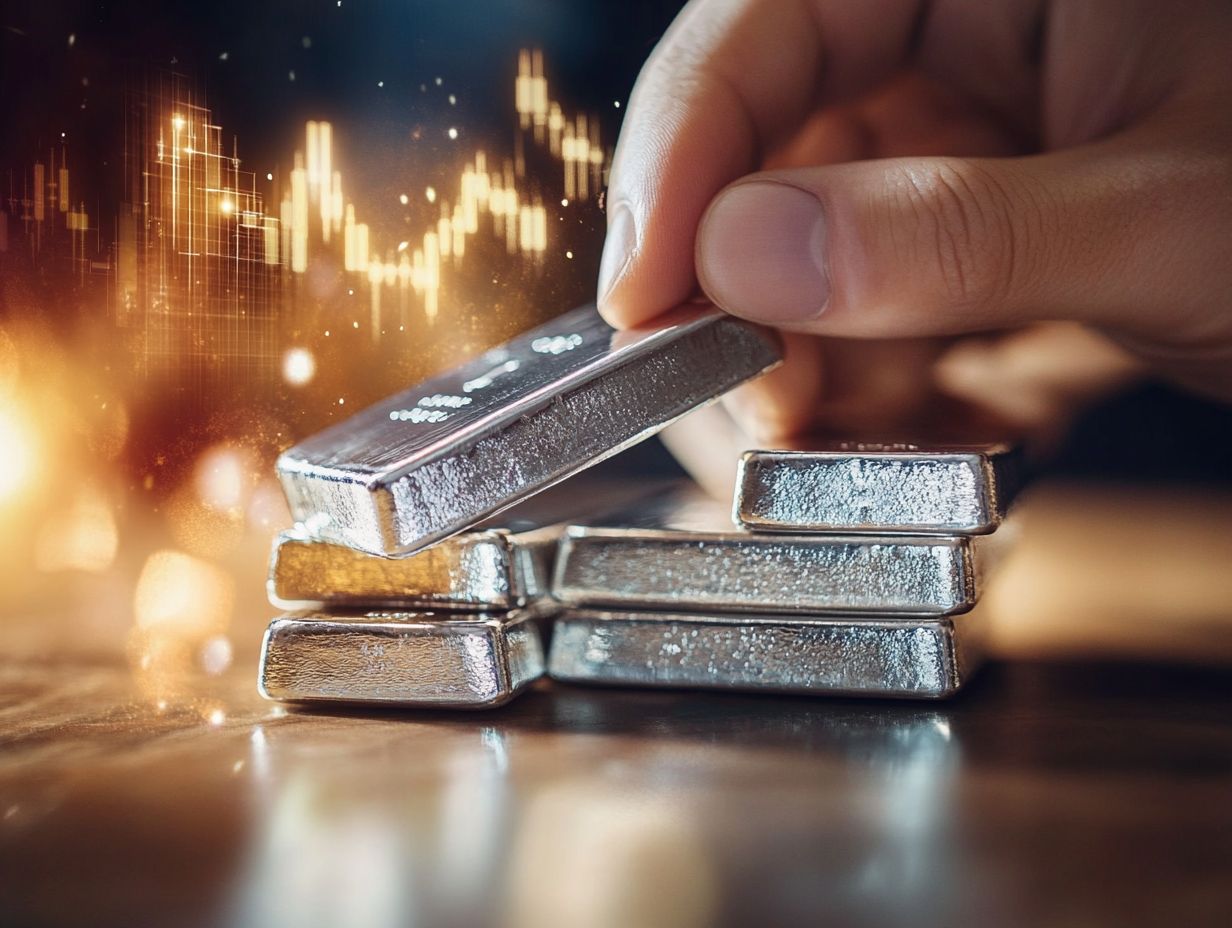
What are the benefits of considering platinum investments?
1. Diversification: Investing in platinum adds diversity to your investment portfolio. Similarly, investing in silver can reduce overall risk while potentially increasing returns.
2. Inflation Hedge: Platinum serves as an effective inflation hedge. Historically, it has maintained and even increased its value during times of inflation, making it a valuable safeguard against economic uncertainties.
3. Limited Supply: Platinum is a rare precious metal with a limited supply, making it a valuable long-term investment. Learn more about the future of platinum as an investment.
4. Industrial Demand: Platinum is used in various industrial applications. This creates steady demand and potential for higher returns.
5. High Liquidity: Platinum is a highly liquid asset. It can be easily bought, sold, and converted into cash, providing flexibility for investors. Exploring unique ways to invest in precious metals can further enhance your investment strategy.
What are some potential risks associated with platinum investments?
1. Market Volatility: Be aware that market volatility can lead to significant losses if you sell at the wrong time stay informed!
2. Economic Factors: The price of platinum can be influenced by economic factors such as interest rates and global demand, which can impact returns.
3. Storage and Insurance Costs: Physical platinum investments may require additional costs for storage and insurance, affecting potential profits.
4. Limited Accessibility: Platinum investments may not be as widely recognized as other investment options, making it more challenging to find information.
How does the current market outlook for platinum look?
Excitingly, the current market outlook for platinum looks very promising! There s increasing demand from industries such as automotive and jewelry. The limited supply and potential for increased industrial use make it a compelling investment option.
Is there a minimum investment requirement for platinum?
You can start investing in platinum with as little as one ounce. However, be aware that investment costs may vary significantly depending on the type of investment.
What are some ways to invest in platinum?
One exciting way to invest in platinum is by purchasing physical forms like coins or bars. You can also explore Exchange-Traded Funds (ETFs), which allow investors to buy shares in a fund that holds physical platinum, providing exposure to the metal without direct ownership. Another option is investing in companies that mine or produce platinum. Lastly, consider futures and options, which involve buying contracts for future delivery of platinum at a set price.
How does platinum compare to other precious metals?
Compared to other precious metals like gold and silver, platinum has a lower supply and higher demand from industries. This can potentially lead to higher returns. However, be mindful that it may also be more volatile due to its industrial demand and limited accessibility in the market.


